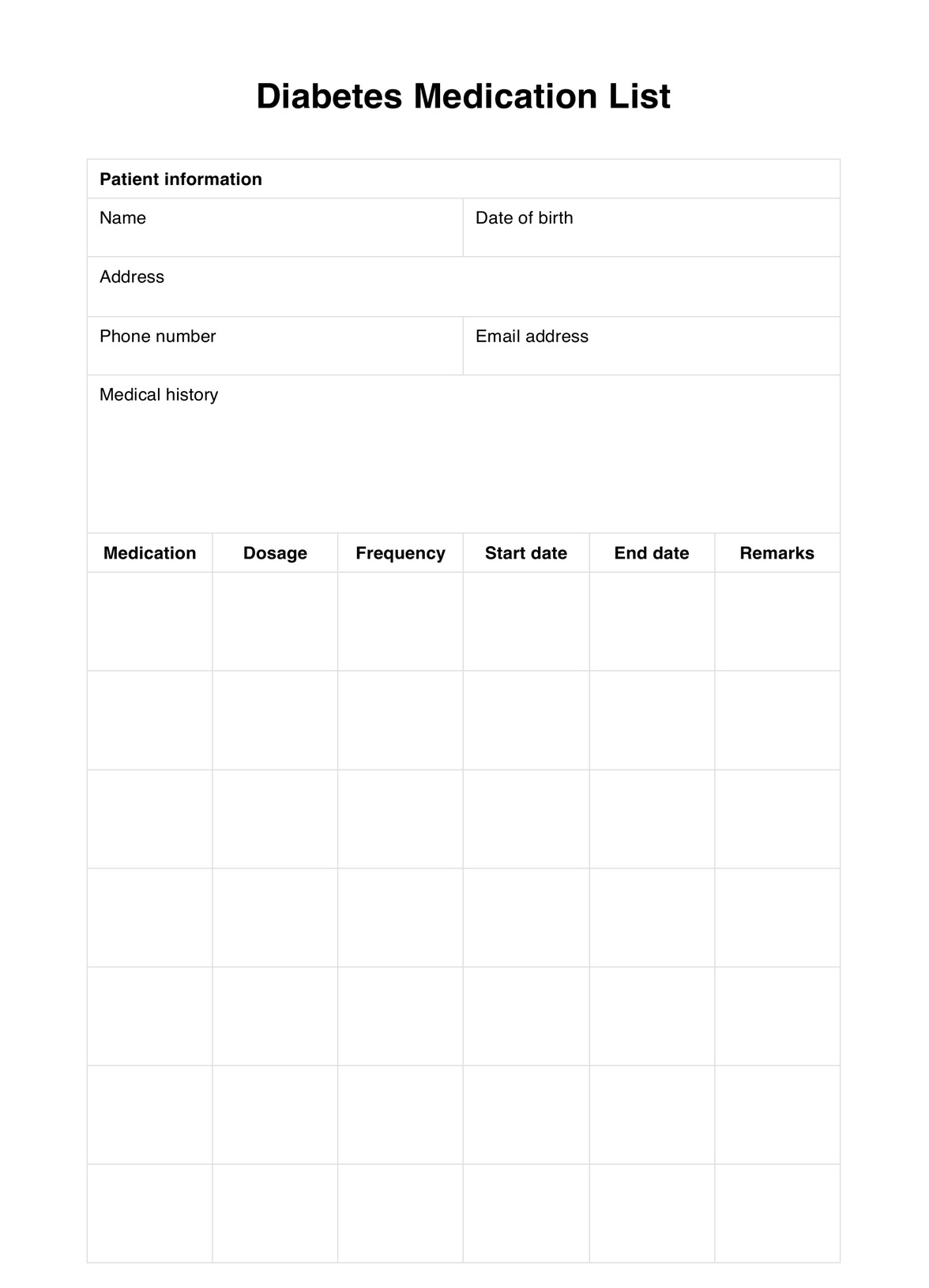Some of the most commonly used diabetes medications include metformin, sulfonylureas, thiazolidinediones, DPP-4 inhibitors, GLP-1 receptor agonists, and SGLT2 inhibitors.

Diabetes Medications List
Help patients stay on top of their diabetes with a free Diabetes Medications List. Download the free template and sample here.
Use Template
Diabetes Medications List Template
Commonly asked questions
Each type of diabetes medication works differently to help lower blood sugar levels. For example, metformin reduces glucose production in the liver, while sulfonylureas stimulate insulin release from the pancreas.
Some common symptoms of high blood sugar levels include increased thirst and urination, fatigue, blurred vision, and slow healing of wounds.
EHR and practice management software
Get started for free
*No credit card required
Free
$0/usd
Unlimited clients
Telehealth
1GB of storage
Client portal text
Automated billing and online payments











